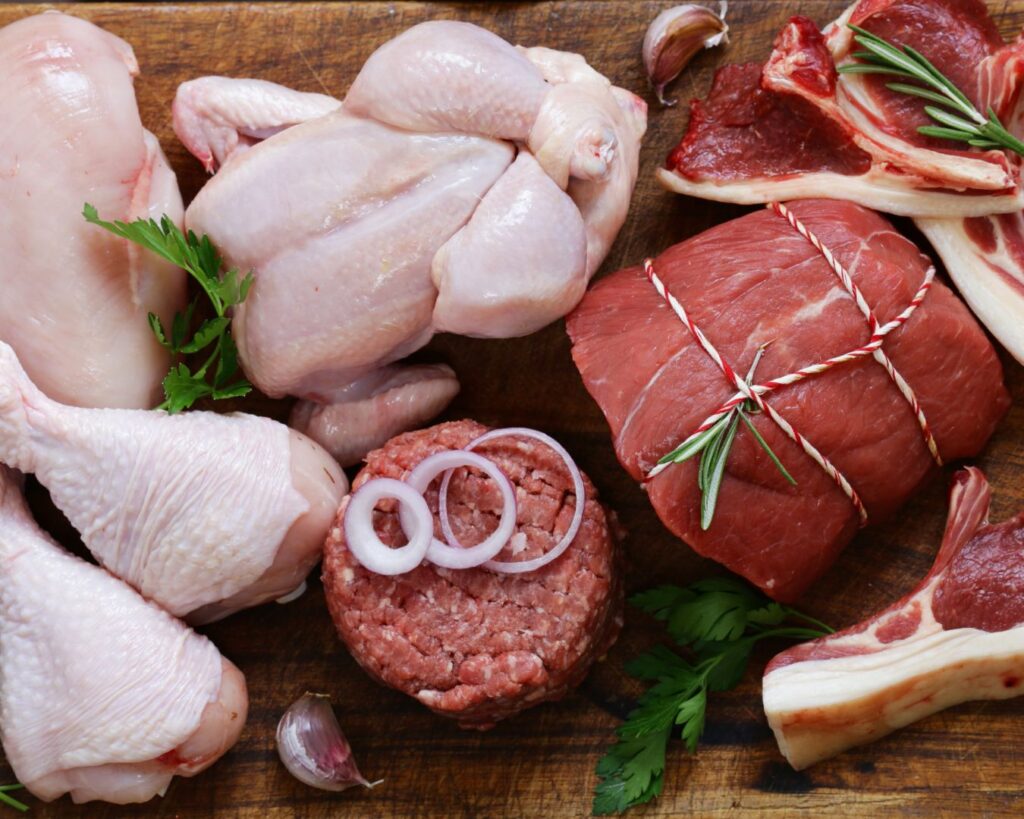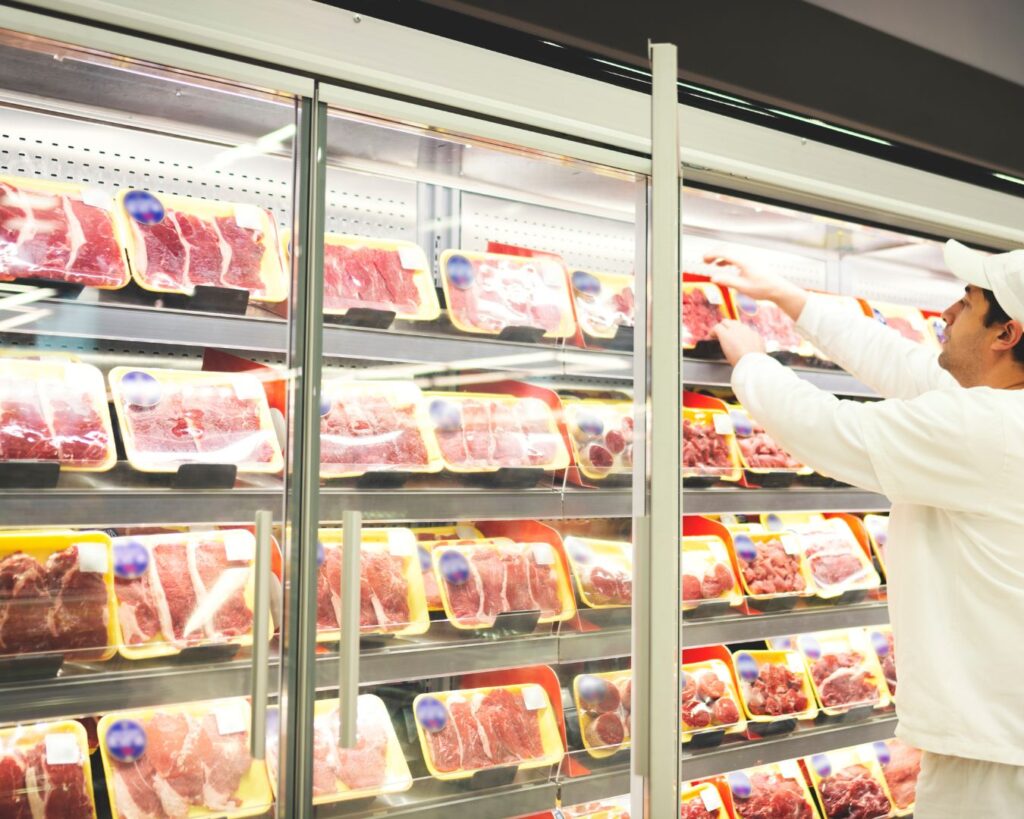How to Safely Handle and Store Raw Meat at Home
Handling and storing raw meat properly is crucial for maintaining food safety and preventing foodborne illnesses. Raw meat can harbor harmful bacteria, such as Salmonella, E. coli, and Listeria, which can contaminate your kitchen and make you sick if not handled correctly. By following best practices for storage, handling, and preparation, you can ensure that your kitchen remains safe and your meals are healthy. In this blog post, we’ll guide you through the essential steps for safely handling and storing raw meat at home.
Purchasing Raw Meat
- Check Expiration Dates: Always check the expiration date before buying raw meat. Choose packages that have the latest sell-by date to ensure freshness.
- Inspect the Packaging: Look for packages that are tightly sealed with no tears, holes, or leaks. Avoid packages with excess liquid, as this could indicate that the meat has been stored improperly.
- Keep Meat Separate: When shopping, keep raw meat separate from other groceries, particularly ready-to-eat foods like fruits and vegetables, to avoid cross-contamination. Use plastic bags to wrap the meat packages to contain any leaks.

Storing Raw Meat
Proper storage is essential to keep raw meat safe and fresh:
- Refrigeration: Store raw meat in the coldest part of your refrigerator, typically the bottom shelf, to prevent juices from dripping onto other foods. Ensure your refrigerator is set to 40°F (4°C) or below.
- Freezing: If you don’t plan to cook the meat within a few days, freeze it to prolong its shelf life. Wrap the meat in freezer-safe bags or heavy-duty aluminum foil to prevent freezer burn. Label the packages with the date of freezing to keep track of storage time.
- Storage Duration:
- Refrigerator: Raw poultry, ground meat, and fish should be used within 1-2 days. Beef, pork, lamb, and veal can be stored for 3-5 days.
- Freezer: Poultry, ground meat, and fish can be frozen for up to 9 months. Larger cuts like steaks, roasts, and whole poultry can be frozen for up to 12 months.
- Thawing Meat Safely: Always thaw frozen meat in the refrigerator, not on the countertop, to prevent bacterial growth. If you need to thaw meat quickly, use the microwave or submerge it in cold water, changing the water every 30 minutes.
Handling Raw Meat in the Kitchen
Safe handling practices can prevent the spread of bacteria in your kitchen:
- Wash Hands: Always wash your hands with soap and warm water for at least 20 seconds before and after handling raw meat. This prevents the transfer of bacteria to other surfaces or foods.
- Use Separate Cutting Boards: Designate separate cutting boards for raw meat and other foods like vegetables or bread. This prevents cross-contamination.
- Avoid Cross-Contamination: Never place cooked meat back on the same plate or cutting board that held raw meat. Always wash utensils, cutting boards, and countertops with hot, soapy water after they’ve been in contact with raw meat.
- Sanitize Surfaces: After preparing raw meat, sanitize all surfaces, including countertops, cutting boards, and utensils. Use a mixture of 1 tablespoon of unscented liquid chlorine bleach per gallon of water to effectively kill bacteria.

Cooking Raw Meat Safely
Proper cooking is essential to kill harmful bacteria:
- Use a Meat Thermometer: Always use a meat thermometer to ensure that meat reaches a safe internal temperature:
- Poultry: 165°F (74°C)
- Ground meats (beef, pork, lamb, and veal): 160°F (71°C)
- Beef, pork, lamb, and veal (steaks, roasts, and chops): 145°F (63°C), with a three-minute rest time
- Fish: 145°F (63°C)
- Avoid Undercooking: Make sure to cook meat thoroughly, especially ground meats and poultry, as they can harbor bacteria throughout the mixture.
- Rest Meat: Allow meat to rest after cooking, especially larger cuts. Resting allows the juices to redistribute and ensures that the meat continues to cook evenly.
Storing Leftover Cooked Meat
Proper storage of cooked meat is just as important:
- Refrigerate Promptly: Store cooked meat in the refrigerator within two hours of cooking. If the room temperature is above 90°F (32°C), refrigerate within one hour.
- Use Airtight Containers: Place leftovers in airtight containers or wrap them tightly with plastic wrap or aluminum foil to maintain freshness and prevent contamination.
- Storage Duration:
- Refrigerator: Cooked meat can be stored in the refrigerator for 3-4 days.
- Freezer: Cooked meat can be frozen for 2-6 months, depending on the type of meat.
- Reheat Safely: When reheating leftovers, ensure they reach an internal temperature of 165°F (74°C) to kill any bacteria that may have developed during storage.
Disposing of Raw Meat Waste
Safe disposal of raw meat waste helps maintain a clean kitchen environment:
- Bag and Dispose of Immediately: Place any packaging, bones, or raw meat scraps in a plastic bag and dispose of them immediately to prevent bacteria from spreading.
- Clean Garbage Bins: Regularly clean and sanitize your garbage bin, especially if it contains raw meat waste, to prevent odors and bacteria buildup.
- Avoid Composting: Do not compost raw meat scraps or bones, as they can attract pests and spread bacteria.
By following these guidelines for handling, storing, and cooking raw meat, you can significantly reduce the risk of foodborne illness in your home. Remember to prioritize cleanliness, prevent cross-contamination, and cook meat to the appropriate temperatures to ensure your meals are safe and delicious. Safe meat handling is a critical part of maintaining a healthy kitchen, and by implementing these practices, you can enjoy your meals with peace of mind.

